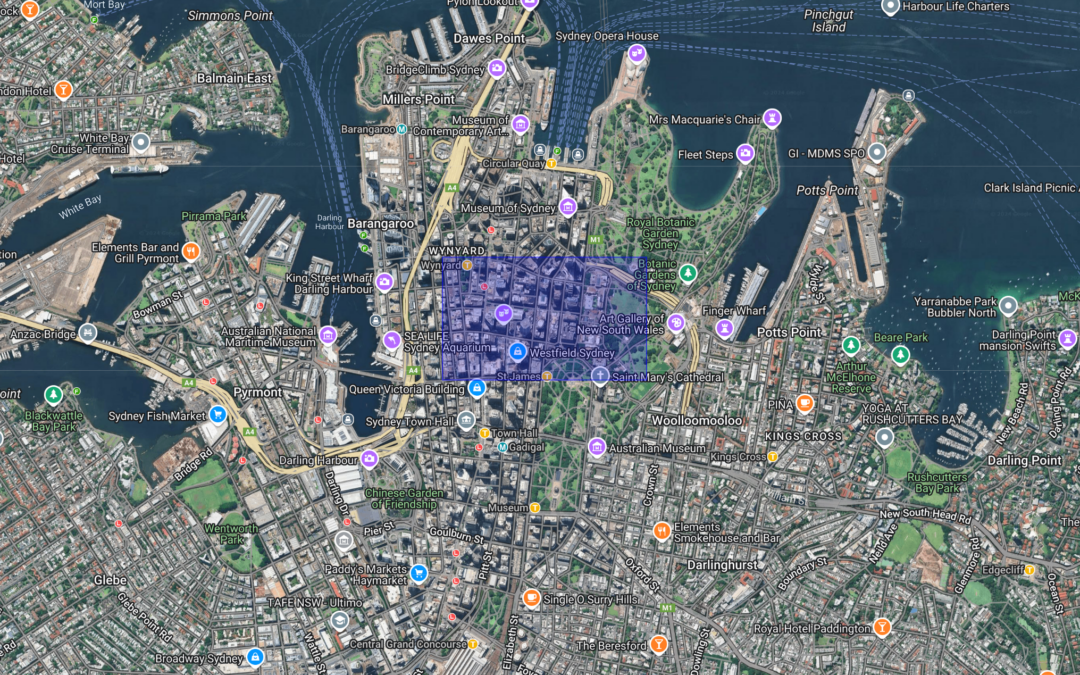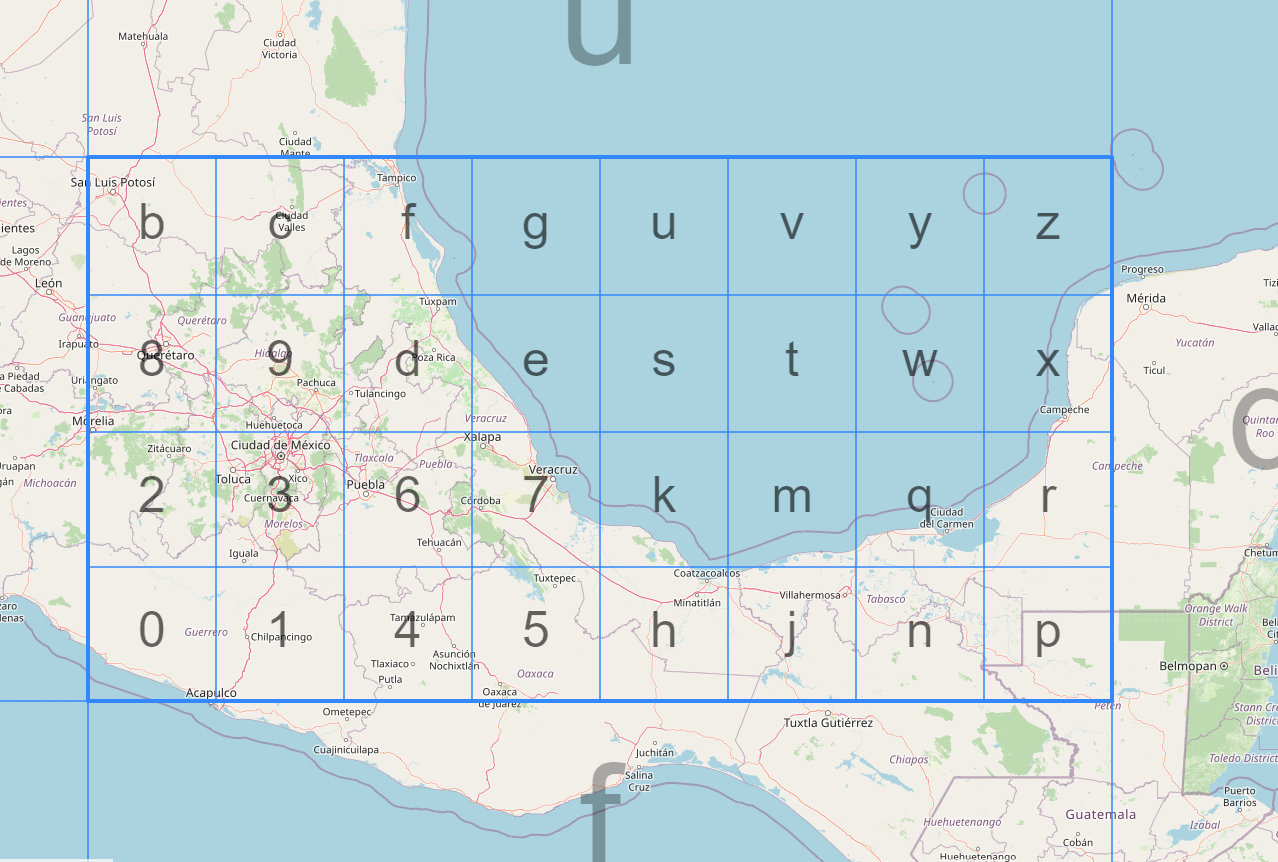What is a geohash and how is it used? We break it down here.
What Is A Geohash?
Geohashing is a geocoding system created in 2008 that encodes geographic coordinates (latitude and longitude) into a short and compact string of characters made up of letters and numbers. The resulting compact string of characters is a Geohash.
Think of it like a secret code for locations on Earth – a short and easy-to-understand code. It turns a place’s latitude and longitude, which are like its coordinates on a big map, into a simple code.
For example, the coordinates “latitude 40.7128 degrees North and longitude 74.0060 degrees West” is the same as geohash “6gkzwgjz.” – this shorter code pinpoints the same location but is much easier to share or remember.
In a nutshell, a geohash is a clever way to turn complex latitude and longitude coordinates into simple codes that make it easier to talk about places and share location information.
This is also what makes geohash a versatile tool, making it easier to work with location-based data and services in a wide range of industries and applications.
Breaking Down Geohash – How the World is Encoded into Precise Rectangles
The main concept behind Geohash is to divide the world into a grid of rectangles and then represent each of these rectangles with a unique code. This code becomes shorter as you zoom out to cover larger areas and gets longer as you zoom in for more precision.
Here’s a technical explanation of how Geohash works:
- Dividing the world into rectangles
Geohash starts by dividing the Earth into a grid of rectangles. The whole Earth is initially represented by one big rectangle. - Choosing a binary representation
Each rectangle is further divided into smaller rectangles. Geohash uses a binary search approach to determine which half of a rectangle contains a given point.
It assigns a binary digit of 1 for the upper half of the rectangle and 0 for the lower half. - Building the geohash string
Starting with the whole Earth as one big rectangle, geohash determines whether a point falls into the top or bottom half (binary digit 1 or 0) and appends that digit to the geohash string.The Earth is then divided into the top or bottom half based on the chosen digit.
This process is repeated iteratively until you have the desired level of precision or length in the geohash string. - Precision and length of the geohash
The length of the geohash string determines the level of precision: A shorter geohash represents a larger area, while a longer geohash represents a smaller and more precise area:
– A Geohash of length 1 represents a large area, such as a continent.– A Geohash of length 2 represents a smaller area, such as a country.
– A Geohash of length 3 represents a region or large city.
– A Geohash of length 4 represents a smaller city or town.
– Geohashes of length 5 or higher represent progressively smaller areas, down to street level and even specific locations. - Encoding characters
To enable the geohash string to be more easily read by humans and generally be more user-friendly, it translates the binary digits into a set of characters. Geohash typically uses a character set of 32 characters: 0-9 and the letters a through z (excluding i, l, o). - Final geohash
The result is a geohash string that represents a specific geographic location. This string is both compact and can be easily shared or stored.
What Does Geohash Look Like?
Geohash divides the world into a grid of rectangles, as indicated in this portion of the world map.
Source: Geohash Explorer
Use Cases of Geohash
Geohash is widely used for its simplicity and efficiency in spatial indexing, making it useful for a wide range of practical applications across industries.
- Location-based searches
Geohash is used in location-based search engines and applications, showing nearby points of interest, businesses, or places based on their current location or a specified area. - Geofencing
- Geohash is employed to create geofences, or virtual boundaries, which can be used for triggering actions or alerts when a device or user enters or exits a specific geographic area, such as location-based marketing, asset tracking, security applications, social networking and even dating apps.
- Mapping and cartography
Geohash is used in cartography to represent geographic data efficiently. It can simplify the storage and retrieval of spatial information in mapping systems. - Digital adventures
Users can connect with people and discover new destinations worldwide via apps which leverage geohashes to enhance travel journaling and social interactions, making global adventures more interactive and engaging.
These are just a few examples, and the applications of geohash continue to expand as location-based data becomes increasingly important across various domains.
The simplified representation of geographic coordinates makes geohash more accessible and user-friendly, which is why it is such a versatile geocoding system with a wide range of uses.
How Does Geohash Compare With Other Spatial Encoding Systems?
A geohash is one of many spatial encoding systems designed to represent geographic locations compactly and efficiently. Geohash can be substituted with alternative systems depending on the specific requirements of the application.
Each spatial encoding system is tailored to address particular needs, offering unique features and trade-offs that make some systems more suitable for specific use cases. For example, geohashes excel in simplicity and spatial indexing, while systems like H3 or Plus Codes may provide advantages in precision, scalability, or user-friendliness.
Originally published: 26 September, 2023
Last updated: 26 November, 2024


